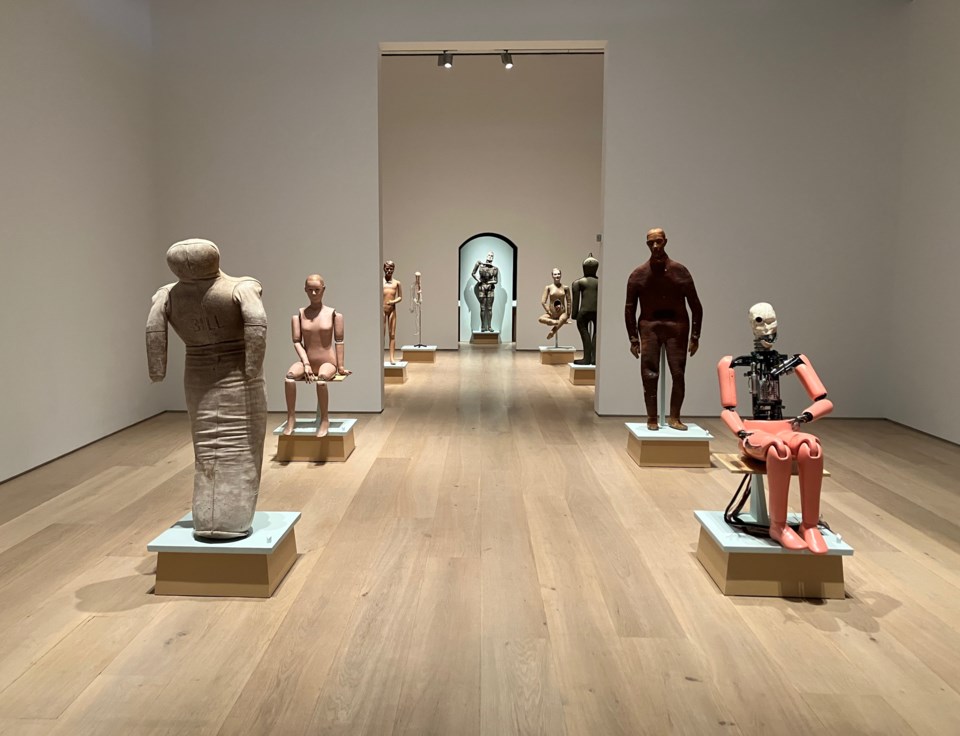SUNDRE – What started out as a project of passion that supports their full-time professions, ended up paving the way for the work of two Bergen-area brothers to be prominently featured at the Esker Foundation in Calgary.
Visual artist Jude Griebel said he and his brother Brendan Griebel, an anthropologist by trade, have over the span of some 20 years accumulated quite a unique collection comprised of “emotionally complicated artifacts that speak directly to themes of human experience, identity and myth-making.”
The brothers have since starting their collaborative pursuit roughly two decades ago built up a repertoire of more than 6,000 objects. In 2017, they opened the Bergen-area Museum of Fear and Wonder that is open from June to August and available by appointment only, although just a selection of items is presented every season.
“The collection focuses on the intersection of imagination and historic craft,” Jude wrote by email in response to questions.
“The objects we collect comprise everything from historic waxworks and mannequins to early masks and costumes, and science models,” he elaborated.
“In many cases, these objects belonged to other historic museums, including wax museums throughout Europe and North America.”
The Museum of Fear and Wonder is housed in a renovated army barracks outside of Bergen, but there is no signage and random drop-in visits are not permitted as it is attached to a private residence, he said, adding appointments can be made online through their website – www.fearandwonder.ca – beginning mid-March every year.
“It uses the dying tradition of the rural museum to highlight the psychological and narrative qualities of objects,” he said. “It forms a greater story in its entirety, both educating and mystifying its audience.”
More recently, the brothers finished installing a fall exhibit featuring a portion of their unique collection at the Esker Foundation in Calgary under the theme Care and Wear: Bodies Crafted for Harm and Healing.
“This exhibition looks at two key roles of the crafted body: care and wear,” said Jude.
“From a young age, many children are guided into the gentle handling of humans through dolls and anthropomorphic playthings. Professional practices and procedures take place on manikins as training for genuine extensions of medical and therapeutic comfort.”
Offering further context, he added, “While some crafted bodies are used as tools for healing and empathy, others are designed as objects to be degraded.
“While the binary of care and wear helps frame this exhibition, the reality is that the objects rarely fall squarely to one side or the other. The physical and emotional patina evident on these objects attests to the many, varied lives they have impacted and been part of in their passage through time; and the objects themselves are shaped through cycles of collective use and mending, which often blurs their character, authorship, and intended purpose,” he said.
“In the exhibition, we are exhibiting historic objects meant to be degraded – such as crash test dummies and carnival knockdown figures – next to objects that are supposed to teach and promote care and empathy, such as hospital training and CPR manikins, dolls and scientific models,” he said.
While mannequins are stationary models generally used to for example model clothes in retail stores, manikins are more functionally realistic and anatomically accurate representations of the human body that are used for training in a variety of medical scenarios.
“We view the exhibit as the initiation of a conversation surrounding past understandings of the body, at a time when our ideas surrounding the body are changing due to AI (artificial intelligence) and digital experience,” he said.
“Our exhibit, though an archive of historic material, speaks to contemporary culture and understandings surrounding the body.”
In today’s context, most consumers tend to live with plastic and other mass-manufactured products that are typically intended to eventually be discarded, he said.
“Due to this, Western culture tends not to invest much emotion into material,” he said.
“The objects that we exhibit are handmade, have long histories and have played emotional roles – whether good or bad – in various peoples’ lives and imaginations,” he said.
“They are crafted bodies that have been used to teach about the body or various elements of human experience. Because of this, they feel like the products of collective imagination, rather than empty material,” he said, adding, “This may become apparent when visiting the exhibition and sharing space with them.”
Being selected to feature a portion of their collection at the Esker Foundation is a privilege, he said.
“We are huge fans of their programming, which pairs challenging contemporary art in unique and unexpected ways,” he said, also expressing gratitude for the opportunity to present the items to a larger audience as their museum can only accommodate a limited number of visitors.
The brothers were both recently busy setting up their exhibit, which launched Sept. 23 and will remain on display at no charge to the public until Dec. 17.
The Esker Foundation is a privately funded contemporary art gallery founded in 2012 by Jim and Susan Hill. Visit www.eskerfoundation.art for more information.



